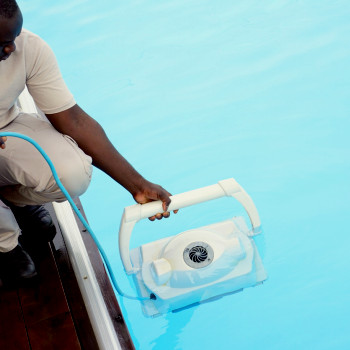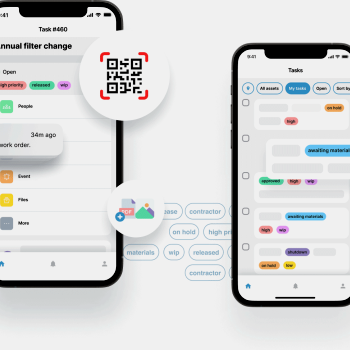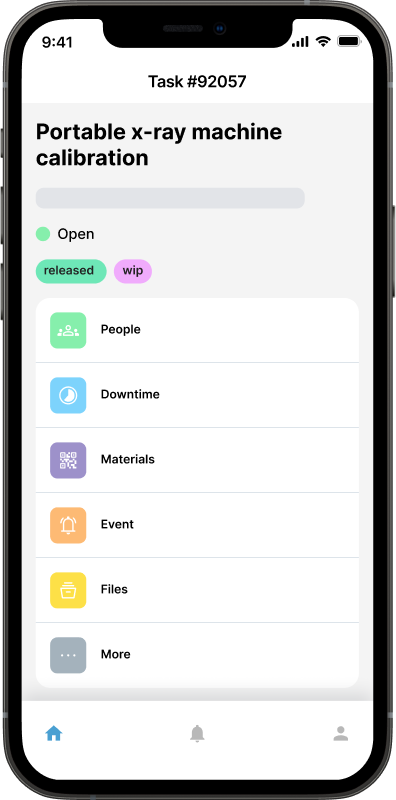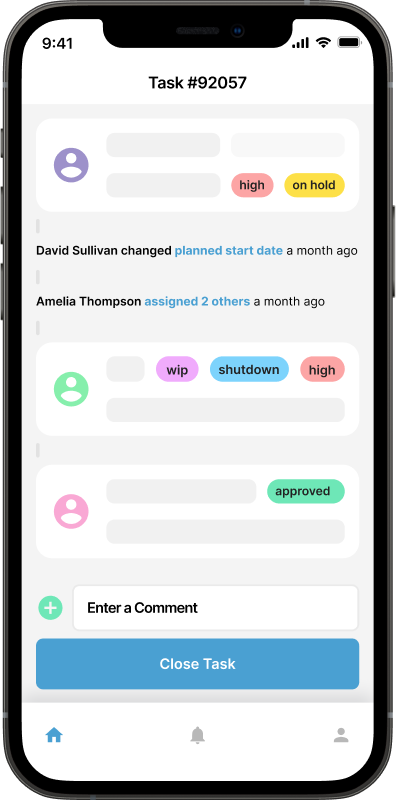Maximizing Efficiency in Hospitality: Tips for Implementing CMMS in a Hotel

In the hospitality industry, guest satisfaction is paramount, and a clean, functional, and well-maintained environment plays a significant role in achieving it. From air conditioning systems and elevators to lighting and housekeeping equipment, hotels rely on hundreds of assets that require regular maintenance. Managing all these components manually is not only inefficient but also increases the risk of costly breakdowns, regulatory violations, and dissatisfied guests.
A Computerized Maintenance Management System (CMMS) offers a solution by digitizing and automating maintenance processes. With a CMMS, hotels can streamline workflows, monitor assets, schedule preventive maintenance, and generate actionable reports that inform strategic decisions. However, implementing such a system in a hotel requires careful planning, staff engagement, and thoughtful integration into existing operations. The following sections provide detailed strategies to make CMMS implementation in a hotel environment successful.
Conduct a Thorough Assessment of Your Hotel’s Maintenance Needs
Before selecting or deploying a CMMS, it’s essential to understand the unique maintenance landscape of your property. Hotels are complex environments with a diverse range of assets and operational zones, from guest rooms and conference halls to pools, spas, and landscaping. Each area has equipment that varies in maintenance complexity, usage frequency, and criticality.
Conducting a thorough assessment allows management to prioritize high-impact assets, understand maintenance frequencies, and ensure the CMMS can handle all operational needs. By analyzing both current practices and historical data, hotels can identify inefficiencies, recurrent problems, and gaps that a CMMS can address, making the implementation more targeted and effective.
Inventory Your Assets: Create a complete list of all equipment and systems that require maintenance, including HVAC units, elevators, lighting, kitchen appliances, and cleaning machines.
Identify Maintenance Requirements: Determine which assets require preventive, predictive, or routine maintenance. Reference manufacturer guidelines and regulatory obligations to ensure compliance.
Analyze Past Maintenance Data: Review existing maintenance logs to detect patterns in failures, downtime, and recurring issues. This information helps prioritize assets and determine which areas will benefit most from CMMS implementation.
Choose the Right CMMS Solution for Hotels
Selecting the right CMMS solution is critical because not all systems are built to address the specific needs of hotels. A poorly chosen system can result in underutilization, wasted investment, and operational inefficiencies. The ideal CMMS should support preventive maintenance, streamline work order management, and integrate smoothly with other hotel systems. CMMS systems like Maintainly have extensive experience in hotel and hospitality settings.
Hotels operate on a 24/7 schedule, meaning maintenance delays can directly impact guests. Choosing a CMMS with user-friendly interfaces, automation capabilities, and robust reporting ensures that maintenance teams can act quickly and effectively. Additionally, integration with existing property management systems (PMS) or energy management systems (EMS) enables better coordination across departments.
Preventive Maintenance Scheduling: Automate reminders for routine inspections and servicing of HVAC systems, elevators, fire alarms, kitchen equipment, and other critical infrastructure.
Work Order Management: Ensure the system allows staff to create, assign, and monitor work orders efficiently, with support for mobile devices.
Asset Tracking: Track asset location, condition, maintenance history, and warranty information to optimize lifecycle management.
Reporting and Analytics: Generate detailed reports to evaluate maintenance costs, equipment performance, and technician efficiency.
Integration Capabilities: Confirm compatibility with PMS, EMS, or other operational systems for seamless data exchange.
Involve Key Stakeholders Early

A CMMS can only succeed when it has buy-in from staff at all levels. Implementing a system without involving stakeholders often leads to resistance, poor adoption, and ineffective utilization. Early involvement ensures that the software aligns with real operational challenges and meets user expectations.
Maintenance teams, management, and even non-technical staff should have a voice in the implementation process. By fostering collaboration and encouraging feedback, hotels can design workflows and system features that genuinely improve daily operations. This also strengthens a culture of accountability and engagement across departments.
Executive Support: Ensure that hotel management understands the benefits of CMMS, including reduced downtime, cost savings, and improved guest satisfaction.
Maintenance Team Input: Technicians provide insight into daily operational challenges, helping tailor workflows and features to real-world needs.
Cross-Department Collaboration: Housekeeping, front desk, and operational teams should be consulted to ensure that the CMMS complements overall hotel operations rather than disrupts them.
Define Clear Goals and Metrics
Without clear objectives, it is impossible to measure the success of a CMMS implementation. Goals help guide the deployment process, inform training efforts, and provide benchmarks to evaluate ROI. They also allow staff to understand why the system matters and how their work contributes to broader operational outcomes.
In hotels, defining metrics ensures that the CMMS is not just a digital tool but a strategic solution for efficiency and guest satisfaction. Metrics provide tangible data to identify bottlenecks, inefficiencies, and high-performing areas, allowing continuous process optimization.
Reduce equipment downtime by a target percentage.
Improve response times for maintenance requests.
Cut maintenance costs over a defined period.
Increase compliance with preventive maintenance schedules.
Tracking these metrics provides evidence of CMMS value and informs ongoing adjustments to workflows and maintenance strategies.
Clean Up and Organize Maintenance Data
A CMMS is only as effective as the data it contains. Many hotels struggle with scattered, incomplete, or outdated maintenance records, which can undermine system performance. Investing time in data cleanup ensures that assets are accurately tracked, maintenance schedules are realistic, and reporting is reliable.
Organized data also makes onboarding staff easier, as they can trust the system and rely on it for actionable information. Inaccurate records, duplicate entries, or missing information can lead to delayed maintenance, increased costs, and frustrated staff.
Update Asset Information: Assign unique identifiers, locations, and detailed specifications for each piece of equipment.
Consolidate Records: Import all existing paper logs, spreadsheets, and legacy digital records into the CMMS.
Standardize Data: Use consistent naming conventions and categorization to reduce confusion and improve reporting.
Develop a Standardized Maintenance Workflow
Hotels operate around the clock, making consistent and well-defined maintenance workflows essential. Without standardized procedures, maintenance tasks may be missed, duplicated, or improperly performed, negatively affecting operations and guest experience.
Standardized workflows ensure that preventive maintenance, inspections, and emergency repairs are performed efficiently and reliably. They also make staff training easier, reduce errors, and provide a clear framework for accountability.
Create Preventive Maintenance Schedules: Establish recurring maintenance intervals for high-use equipment based on manufacturer guidelines or operational needs.
Implement Work Order Protocols: Define processes for creating, assigning, prioritizing, and closing work orders.
Use Checklists: Ensure technicians follow standardized procedures for complex tasks such as elevator inspections, HVAC servicing, or kitchen equipment maintenance.
Train Staff Thoroughly
Even the most powerful CMMS will fail if staff don’t know how to use it properly. Training is essential to ensure adoption and consistent system use. Well-trained employees can complete tasks more efficiently, reduce errors, and make better use of reporting tools.
Training should be continuous and role-specific, equipping staff with the skills they need to leverage the CMMS effectively. Engaging employees during training also fosters a sense of ownership and encourages adoption.
Role-Based Training: Tailor sessions for maintenance technicians, supervisors, and managers based on their system responsibilities.
Hands-On Practice: Provide practical exercises, including creating work orders, updating asset data, and generating reports.
Continuous Learning: Offer refresher courses and system updates to keep skills current as features evolve.
Start Small and Scale Gradually
A phased implementation reduces the risk of errors and allows the team to adapt gradually. Trying to deploy a CMMS across an entire hotel at once can overwhelm staff, disrupt operations, and create resistance to change.
A pilot approach allows management to identify potential issues, adjust workflows, and build confidence before a full rollout. It also generates early wins, boosting staff confidence and demonstrating the CMMS’s value.
Pilot Program: Start with one department, such as engineering or housekeeping, to test workflows and resolve challenges.
Evaluate and Adjust: Gather feedback from staff, refine processes, and address technical issues.
Full Rollout: Expand the system to all departments and properties after ensuring that workflows are effective and staff are comfortable with the platform.
Leverage Mobile Capabilities

In a hotel environment, maintenance staff are constantly on the move, responding to requests across multiple floors or buildings. Mobile CMMS capabilities allow real-time updates, faster response times, and better communication, all of which directly impact guest satisfaction.
Mobile access ensures that technicians can receive assignments instantly, update work order statuses, and access asset history without returning to an office or workstation. Mobile CMMS apps also support features like barcode scanning and photo documentation, increasing efficiency and accuracy.
Mobile Work Orders: Enable technicians to receive, update, and complete work orders on their devices.
Barcode/QR Code Scanning: Quickly locate assets and view maintenance history by scanning labels.
Real-Time Communication: Facilitate instant updates to supervisors and other staff, reducing downtime.
Monitor and Optimize Performance
A CMMS is not a “set and forget” solution. Continuous monitoring and optimisation are essential to maximize its value. Tracking KPIs, identifying trends, and refining workflows allow hotels to adapt to changing needs and improve overall efficiency.
Monitoring performance ensures the system evolves with operational demands, keeps maintenance proactive rather than reactive, and highlights opportunities for cost reduction. Over time, this data can inform strategic decisions regarding equipment replacement, staffing, and preventive maintenance priorities.
Track Key Metrics: Monitor preventive maintenance compliance, average completion times, asset downtime, and maintenance costs.
Analyze Trends: Use reporting tools to identify recurring issues or underperforming equipment.
Refine Processes: Adjust schedules, workflows, and staffing based on data insights to improve efficiency.
Encourage a Maintenance Culture
Technology alone does not ensure successful maintenance. A CMMS implementation works best in an environment where staff understand the value of maintenance and actively participate in its processes.
Creating a culture that prioritizes asset care improves compliance, reduces emergency repairs, and enhances guest satisfaction. When staff feel empowered and recognized for proper maintenance practices, they are more likely to adopt and use the CMMS effectively.
Empower Staff: Encourage reporting of issues and adherence to preventive maintenance schedules.
Reward Compliance: Recognize employees who consistently follow procedures and contribute to operational efficiency.
Integrate with Hotel Goals: Demonstrate how proper maintenance improves guest experience, reduces complaints, and protects revenue.
Consider Regulatory and Safety Compliance
Hotels must comply with numerous regulations, including fire safety, food hygiene, and accessibility standards. A CMMS provides a centralized system to schedule inspections, maintain records, and generate documentation for audits.
By ensuring compliance, hotels reduce risk of fines, legal issues, and negative guest experiences. Automated reminders, audit trails, and incident reporting streamline the compliance process and provide peace of mind to management.
Inspection Reminders: Schedule routine inspections for fire extinguishers, emergency exits, kitchen hygiene, and other safety requirements.
Audit Trails: Maintain detailed records of maintenance tasks, inspections, and corrective actions.
Incident Reporting: Document equipment failures or safety incidents to improve accountability and future prevention.
Integrate Sustainability Practices
Sustainability is increasingly important in the hospitality industry. Hotels that track energy usage, water consumption, and equipment efficiency can reduce environmental impact and operational costs. A CMMS provides the tools to monitor and optimize these areas.
Preventive maintenance not only prolongs asset life but also ensures that equipment operates efficiently, reducing energy consumption. Accurate data from a CMMS can support green certifications, enhance corporate responsibility initiatives, and appeal to environmentally conscious guests.
Track Energy-Intensive Assets: Monitor HVAC, lighting, and kitchen equipment to identify energy-saving opportunities.
Optimize Preventive Maintenance: Regular servicing keeps equipment running efficiently, reducing energy and water consumption.
Support Green Certifications: Maintain records that support sustainability initiatives, such as LEED or Green Key certifications.
Implementing a CMMS like Maintainly in a hotel environment can transform maintenance operations, reduce costs, and improve guest satisfaction. Success requires thoughtful planning, stakeholder involvement, accurate data, standardized workflows, and thorough training. By carefully assessing needs, selecting the right software, starting small, leveraging mobile tools, monitoring performance, and fostering a culture of maintenance, hotels can ensure their CMMS delivers tangible operational and financial benefits.
A well-implemented CMMS is more than a maintenance tool - it’s a strategic asset that protects investments, streamlines operations, and guarantees a seamless experience for every guest.

